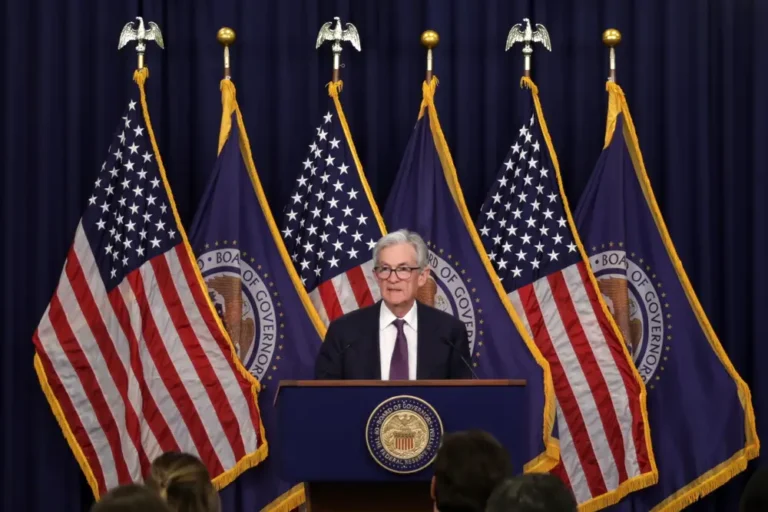A 32-year-old set aside 78% of her income for 5 years and saved $200,000. She explains why she abandoned the FIRE movement and decreased her savings rate to 10%.

- Gwendolyn Merz didn’t like her first job out of college and embraced the FIRE movement.
- She tracked her expenses to the penny, saved up to 78% of her income for five years, and quit to work for herself.
- She has since abandoned the FIRE movement, is back in a W-2 job, and spends her money freely.
Gwendolyn Merz’s entry into the corporate world after graduating in 2013 was not easy.
Going from the “freedom of college to, you have to have your butt in the chair for eight hours a day doing other people’s tasks,” the 32-year-old told Insider, was not ideal.
It didn’t help that she disliked her workplace. But, as a recent graduate in her early twenties, she had no other context.
“I thought, ‘Oh, this is just how all work is,'” Merz said, adding that it wasn’t for her.
She is embracing the FIRE movement, meticulously tracking her expenses, and saving 78% of her income.
Merz’s work dilemma was solved by the Financial Independence, Retire Early movement, which she first learned about in college.
“I looked at these people and they were 10, 15 years older than me, they were already retired, and they had a lot of money,” she told me. “And I was like, ‘cool, I want to do that, too.'”
She became determined to save money. Merz, like many other super savers interviewed by Insider, focused on reducing three major expenses: housing, transportation, and food.
She rented a house in northern Illinois for $900 and found a roommate to reduce her rent even further, allowing her to save up for a triplex. She then moved into the triplex and rented out the other two units for more than her monthly mortgage, claiming that “I took one of the biggest expenses that people have each month and I turned it into an income opportunity.”
Merz drove a 2005 Pontiac that she bought with cash in college, so she didn’t have a car payment. She joined a CSA from a local farm to save money on staples like meat and eggs, and she cooked the majority of her meals.
She would also do “no-spend months” and try to spend only on necessities. Some months, she’d only spend $1,000.
Merz tracked her expenses to the penny and saved up to 78% of her income, saying, “It was almost like a game to see if I could get my savings rate a little higher.”
While it may not have felt like she was making sacrifices at the time, she admits she probably passed up some opportunities. “I was single at the time, so I was dating and that’s really hard when you don’t want to spend any money,” she told me.
She put her extra money into retirement accounts, funding her 401(k), Roth IRA, and HSA.
“It worked out well because that was the beginning-middle of the bull market in the 2010s,” she went on to say. “So every dollar that I poured into savings accounts just immediately started growing, and that’s how I ended up saving $200,000 in five years.”
9 months later, she quit her job and returned to the corporate world
Merz felt confident quitting her IT job with a $200,000 war chest. She was 28 years old.
She had no intention of quitting her job entirely. During her “super saving” period, she established additional revenue streams, such as freelance writing and podcasting, and decided to work for herself and draw on her savings only when necessary.
Merz encountered several unexpected challenges: she couldn’t access much of her savings because they were locked up in tax-advantaged retirement accounts, which you can’t touch without penalty until you’re 59 12 years old. She was also not earning as much as she expected and was paying significantly more for health insurance.
“I realized that working my fingers to the bone and not having a great time being my own boss wasn’t worth it just to be able to say that I was my own boss and not working,” she told me.
She decided to look for another W-2 job after about six months of working for herself. Merz was back in IT nine months later, working for a different company.
I realized that I couldn’t save so much money and still have a good quality of life. > Gwendolyn Merz
She claims to have no regrets. Quitting and attempting a more entrepreneurial lifestyle was a learning experience.
“When you’re working for the man or for somebody else for eight hours a day, the grass looks really, really green on the other side where you’re your own boss,” she told me. “But it turns out, I’m not a great boss for myself and I don’t mind working for somebody else, as long as it’s fairly flexible and there are reasonable expectations from their side.”
Merz discovered that she would rather have a consistent paycheck from a company she enjoys working for than a fluctuating income as an entrepreneur. She also discovered that extreme early retirement was not for her.
She reduced her savings rate from 78% to 10%, saying, ‘I’ve said goodbye to retiring in my 30s or 40s.’
Merz returned to W-2 work and relocated from the Midwest to Washington, DC, where the cost of living was significantly higher.
“I realized that it wasn’t possible for me to save so much money and still have a decent quality of life,” said Merz, who now lives in St. Louis. She also realized that if you find a company culture with which you connect, as she did at her second job, work doesn’t have to be a chore.
Both of these factors made her reconsider her desire to retire early.
“I don’t have any plans to work beyond 55 or 56, which is still way earlier than most people are able to retire at, but I’ve said goodbye to retiring in my 30s or 40s,” she went on to say.
She now saves 10% of her income — she puts it into her 401(k) and receives the full company match — and spends the rest of her pay as she pleases.
Because she has such a large head start on savings, she believes a 10% savings rate will allow her to retire in her mid-50s. Her net worth is estimated to be around $400,000, as evidenced by screenshots from her Monarch account.
The way she looks at it: “I have too much saved for retirement, so I find it more valuable to spend my money on things today that improve the quality of my life.”
She bought a new car, no longer compares prices at the grocery store, and isn’t afraid to splurge on a date with her boyfriend.
She’s not going overboard and spending more than she earns — she still keeps track of her spending, just less meticulously — but “money is not at the forefront of my decisions anymore,” she says. “It’s not always the best financial decision,” she said, “but it’s the best decision for me and my happiness and my mental health.”
Merz also has side hustles and projects. She is currently working on a book about how she recovered from being a super saver and had to reintroduce the concept of conscious spending after years of not spending anything.
She would not change her saving habits in her twenties if she could.
“I really don’t have any regrets,” she said. “I’m grateful that I didn’t waste my money because a lot of people reach 30 and wonder, ‘Wait, I earned all this money in my twenties — what happened to it?'” What happened to it? But I know exactly where it went, and I’m happy with where it went.”






